3 Easy ways to get started collecting Ancient Coins!
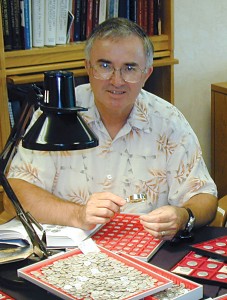
One of the neat things about working at Littleton Coin Company is that President David Sundman is an avid collector too – his favorites… ancient coins! Here he takes a moment from his busy day to enjoy his collection.
Imagine owning a coin struck before the time of Christ and actually holding it in your hand. Instead of looking at it in a museum case, you’ll hold a tangible object that’s familiar and many centuries older! When ancient coins are broken down in to simple categories, what’s really surprising is that they’re fun and easy to collect!
Perhaps you thought ancients would be intimidating or too expensive to collect because they’re hundreds or thousands of years old. Or perhaps you thought they’d be too hard to understand because they seem so very different than U.S. coins… but that’s just not case. Every coin was struck by hand centuries before the age of manufacturing, so each one is different as far as design centering, sharpness of strike and even shape… making each one unique. Compared to U.S. coins, ancients can be more interesting because of their links to history and in many cases, they are more affordable. So I thought I’d offer you tips on how to get started collecting one (or all!) of these three groups: Roman, Greek or biblical coins!
1. Roman coins – Similar to today’s coinage
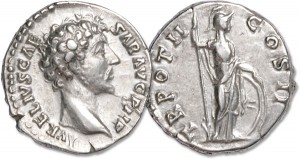
Marcus Aurelius Silver Denarius
Like our everyday coinage, which features the U.S. presidents, ancient Roman coins feature emperors. I recommend putting together a collection with one portrait for each ruler. Struck from 27 B.C. to A.D. 518, these coins show the faces of the powerful men who ruled Rome 1,500 years ago. Their reverses show family members, gods and goddesses, commemorate events and feature important architectural achievements (some which no longer exist today, read more here).
Roman coins can be bronze, silver or gold. In most cases, bronze coins are some of the most affordable. Check out Roman coins in our learn center and download our FREE How to Collect Ancient Roman Coins – it’s a nice guide. For something more challenging, try putting together a series with different family members or interesting buildings. Plus, we have a custom album, making it easy to display and organize your coins. Your collection can be as big or little as you want.
2. Greek Coins – Symbols of the Cities that issued them
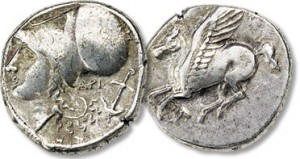
Corinth used Pegasus.
If you think of the Statue of Liberty or the Empire State Building when you think of New York City, or the Golden Gate Bridge and trolley cars when you think of San Francisco, then you already have insight into Greek coins. One of the easiest ways to start a collection is with coins from the various city states.
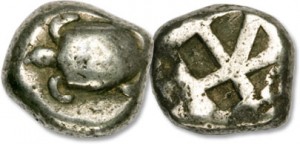
Aegina used the Turtle.
Ancient Greece once had powerful city states (independent cities with their own governments). And each one of those produced coins that displayed unique badges or symbols identifying the particular city that had issued it. These badges or symbols made it easy to tell at a glance whose money you were getting for the goods you were exchanging, since trade was important. For centuries, Athens (the city that gave us democracy) used an owl as an identifier on its coins. Boeotia, a rival of Athens, used a shield on its coins; Corinth used Pegasus, and Aegina used the turtle. One tip I recommend is to print out a map of ancient Greece. By starting this way and becoming familiar with the city names and various regions, you’ll soon discover other ways to put together your collection.
3. Biblical Coins
Nothing is more awe-inspiring than owning a coin mentioned in the Bible’s New Testament, and biblical coins offer a wide variety – from small bronze coins to silver issues. What attracts collectors is many circulated during the life of Jesus. In fact, numismatic scholar Kenneth Bressett states in his acclaimed book Money of the Bible that “No fewer than 16 of the 40 parables preached by Jesus mention coins or money.”
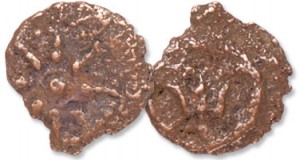
The widow’s mite is one of the coins Jesus spoke of in the bible.
One of the best-known parables in the Bible mentions coins found in the books of Luke and Mark. The story about the poor widow who gave her only coins, two mites, is about charity and goodwill… and refers to the bronze prutah or widow’s mite. Then there’s the story of the Good Samaritan (also in Luke) who gave two silver denarii to an innkeeper to care for an injured traveler. And for those who like the Nativity story, check out the bronze coins of Herod I the Great, ruler in Judaea when Jesus was born. Coins like these are filled with historical and scriptural significance and help bring biblical stories to life.
And there you have it – easy ideas to follow to begin your journey into the past.




I also love collecting coins of different nations.
Thanks, as you know many world coins have roots in ancient coins.
Wow Wonderful Coins I dont miss it
Thanks for your comments. Greek coins can make a good transition to collecting Indian coins, because many of the Indo-Greek kings were successors to Alexander the Great.